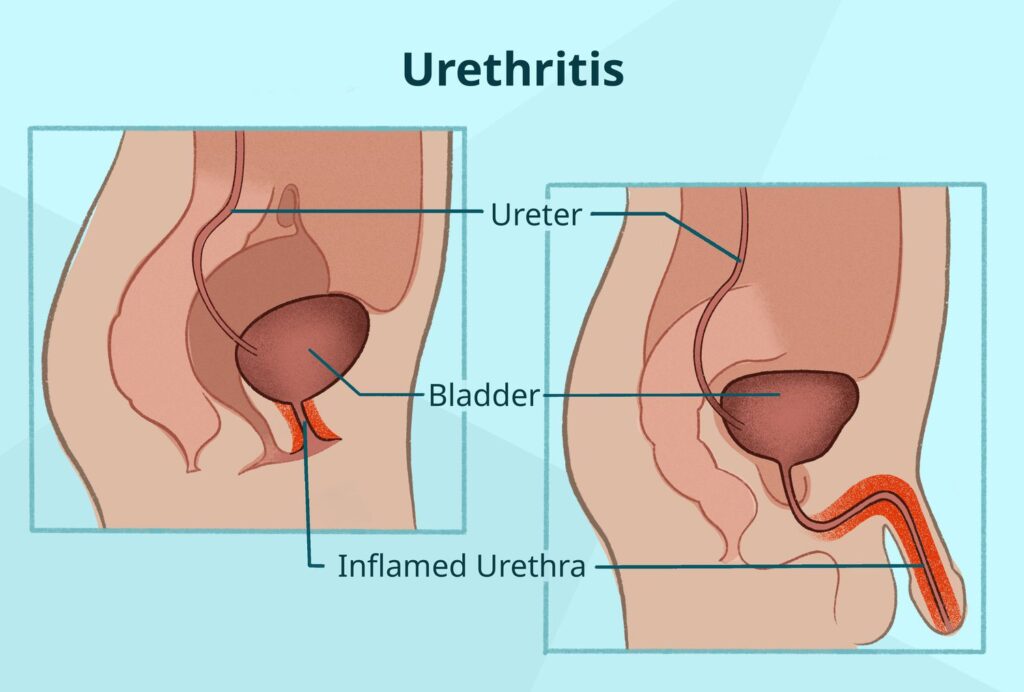Chlamydia trachomatis urethritis is a common sexually transmitted infection (STI) caused by the bacterium Chlamydia trachomatis. It primarily affects the urethra, leading to inflammation and a range of symptoms. Left untreated, this condition can result in serious complications, including infertility. This article explores the causes, symptoms, diagnosis, treatment, and prevention of this condition to provide a comprehensive resource for healthcare professionals and the general public.

Causes of Chlamydia Trachomatis Urethritis
Chlamydia trachomatis urethritis is transmitted primarily through sexual contact, including vaginal, anal, and oral sex. The bacterium infects epithelial cells lining the urethra and other mucosal surfaces, causing inflammation. Risk factors for acquiring this infection include:
- Unprotected sexual activity
- Multiple sexual partners
- Previous history of STIs
- Partner with a confirmed STI
Individuals engaging in sexual activity with inadequate protection are at heightened risk of infection.
Symptoms
The symptoms of chlamydial urethritis vary between men and women. Many infected individuals are asymptomatic, complicating early diagnosis.
Symptoms in Men
- Dysuria (painful urination)
- Urethral discharge, often clear or whitish
- Burning or itching around the urethral opening
- Testicular pain in rare cases
Symptoms in Women
- Dysuria
- Increased vaginal discharge
- Pelvic discomfort or pain
- Intermenstrual spotting or post-coital bleeding
Asymptomatic cases, which comprise up to 70% of infections in women and 50% in men, often go undiagnosed, increasing the risk of complications.
Diagnosis of Chlamydia Trachomatis Urethritis
Accurate diagnosis is essential for managing chlamydia trachomatis urethritis effectively. Diagnostic methods include:
- Nucleic Acid Amplification Tests (NAATs): These are the most sensitive and specific tests available, detecting bacterial DNA or RNA in urine samples or swabs from the urethra or cervix.
- Microscopy: Gram staining of urethral discharge may show evidence of inflammation, but it is less specific.
- Culture Tests: Although rarely used, bacterial cultures can confirm the infection in specialized settings.
Early diagnosis is critical for preventing complications and transmission.
Treatment Options
Effective treatment is straightforward and involves antibiotics. Commonly prescribed regimens include:
- Azithromycin: A single dose of 1g orally.
- Doxycycline: 100mg orally twice daily for 7 days.
Alternative antibiotics such as erythromycin or levofloxacin may be used in cases of allergy or resistance.
Partner Treatment
All recent sexual partners should be tested and treated to prevent reinfection and ongoing transmission. Partner notification is a key component of controlling the spread of the infection.
Complications of Untreated
Without treatment, chlamydia trachomatis urethritis can lead to severe complications, including:
- In Men: Epididymitis, prostatitis, and infertility.
- In Women: Pelvic inflammatory disease (PID), chronic pelvic pain, ectopic pregnancy, and infertility.
- In Newborns: Neonatal conjunctivitis and pneumonia due to vertical transmission during childbirth.
Prevention Strategies
Prevention of chlamydia trachomatis urethritis involves behavioral, medical, and public health interventions. These include:
- Consistent Condom Use: Proper use of condoms significantly reduces the risk of transmission.
- Routine Screening: Regular STI testing for sexually active individuals, especially those with multiple partners.
- Education and Awareness: Public health campaigns emphasizing safe sexual practices and the importance of testing.
- Partner Notification Programs: Encouraging infected individuals to inform their sexual partners about the need for testing and treatment.
Epidemiology
Chlamydia trachomatis urethritis is one of the most commonly reported STIs globally. According to the World Health Organization (WHO), over 100 million cases are estimated annually worldwide. The highest prevalence is seen in sexually active individuals aged 15–24 years, with rates higher in women compared to men.